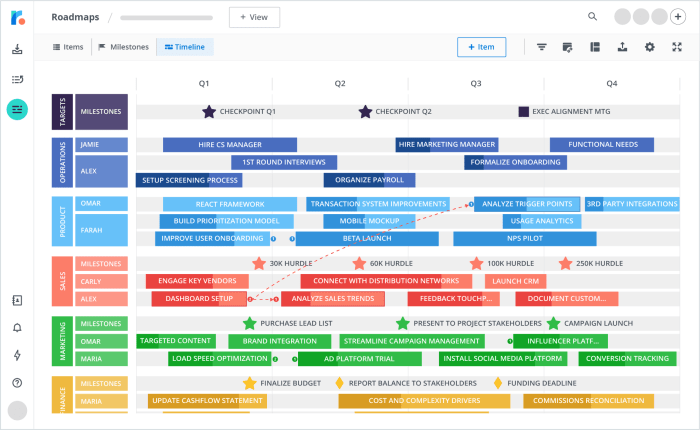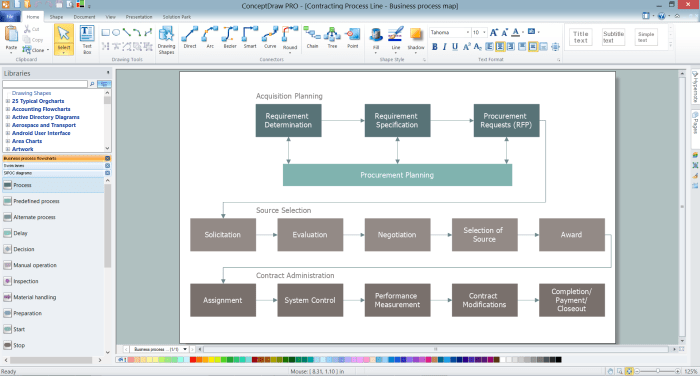In today’s data-driven business landscape, location intelligence has emerged as a game-changer. Business map software, the cornerstone of this intelligence, empowers organizations to harness the power of geographic data, transforming decision-making and unlocking unprecedented opportunities.
From visualizing complex data on interactive maps to seamlessly integrating with other business applications, business map software offers a comprehensive suite of features tailored to meet the evolving needs of modern businesses.
Overview of Business Map Software
Business map software is a type of software that helps businesses visualize their data on a map. This can be useful for a variety of purposes, such as tracking customer locations, identifying sales trends, and planning marketing campaigns.
There are many different business map software solutions available, each with its own strengths and weaknesses. Some of the most popular solutions include:
- Google Maps Platform
- Mapbox
- Esri ArcGIS
- QGIS
Key Features of Business Map Software

Business map software offers a range of features that can help businesses make better use of location data. These features include:
Data Visualization and Mapping Capabilities
Business map software allows users to visualize data on a map, which can help them to identify patterns and trends that would not be apparent from looking at the data in a spreadsheet or table. For example, a business could use map software to visualize the location of its customers, and then use this information to target marketing campaigns or to open new stores in areas with a high concentration of customers.
Integration with Other Business Applications
Business map software can be integrated with other business applications, such as CRM systems, ERP systems, and marketing automation platforms. This integration allows businesses to use location data to improve their business processes. For example, a business could use map software to integrate with its CRM system to track the location of its sales team, and then use this information to optimize their sales routes.
Location Intelligence and Analytics
Business map software can provide businesses with location intelligence and analytics, which can help them to make better decisions about their business. For example, a business could use map software to analyze the location of its customers, and then use this information to identify the best locations for new stores or to target marketing campaigns.
Benefits of Using Business Map Software
Business map software offers numerous advantages for organizations seeking to leverage location data for improved decision-making, enhanced customer engagement, and optimized operations. By integrating spatial data with business information, businesses can gain valuable insights that drive growth and success.
Improved Decision-Making Based on Location Data
Business map software enables organizations to visualize and analyze location-based data, providing a comprehensive understanding of their customers, competitors, and market landscape. This data-driven approach supports informed decision-making, allowing businesses to identify opportunities, mitigate risks, and allocate resources effectively.
Enhanced Customer Segmentation and Targeting
By mapping customer data, businesses can segment their audience based on geographic factors such as location, demographics, and spending patterns. This granular segmentation enables targeted marketing campaigns that resonate with specific customer groups, increasing engagement and conversion rates.
Optimized Route Planning and Logistics
Business map software provides advanced route planning and optimization capabilities, helping businesses streamline their logistics operations. By considering factors such as traffic patterns, road conditions, and delivery constraints, organizations can create efficient routes that minimize travel time and costs.
4. Applications of Business Map Software
Business map software finds applications in a wide range of industries, enabling businesses to leverage geospatial data for informed decision-making and enhanced operations.
Here are some specific examples of how business map software is used in various sectors:
Retail
- Site selection: Business map software helps retailers identify optimal locations for new stores by analyzing factors such as population density, demographics, and proximity to competitors.
- Customer analysis: By mapping customer data, retailers can gain insights into customer behavior, identify target markets, and develop targeted marketing campaigns.
Healthcare
- Patient management: Business map software allows healthcare providers to track patient locations, monitor their health status, and provide remote care.
- Resource allocation: By mapping healthcare resources, such as hospitals, clinics, and medical equipment, healthcare providers can optimize resource allocation and improve patient access to care.
Manufacturing
- Supply chain optimization: Business map software helps manufacturers track the movement of goods throughout the supply chain, identify bottlenecks, and optimize transportation routes.
- Inventory tracking: By mapping inventory levels across warehouses and distribution centers, manufacturers can improve inventory management and reduce stockouts.
5. Considerations for Choosing Business Map Software

Selecting the right business map software is crucial to optimize its benefits and ensure a successful implementation. Here are key factors to consider:
Business Requirements and Objectives
Identify the specific needs and goals your business aims to achieve with the software. Consider the types of data you need to visualize, the desired level of customization, and the expected user base.
Integration Capabilities
Ensure the software integrates seamlessly with your existing systems, such as CRM, ERP, and GIS platforms. This enables data sharing, eliminates duplication, and streamlines workflows.
Cost and Licensing Options
Determine the software’s pricing model, including subscription fees, licensing costs, and any additional expenses for support or customization. Evaluate the cost-benefit ratio to ensure the software meets your budgetary constraints.
Conclusion

As the world becomes increasingly interconnected, the role of business map software will only continue to grow. By leveraging location data, businesses can gain a competitive edge, optimize operations, and drive informed decisions that shape their future success.

